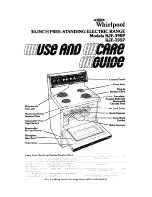
F 500 V3 Oslo 4 / 20
27
Appendix B
Alternate Floor Protection
All floor protection materials must be non-combustible ie. metal,
brick, stone, mineral fiber boards). Any combustible material may
not be used.
The easiest means of determining if a proposed alternate floor
material meets requirements listed in this manual is to follow
this procedure.
R-value = thermal resistance
k-value = thermal conductivity
C-value = thermal conductance
1. Convert the specification to R-value;
a. If R-value is given, no conversion is needed.
b. If k-value is given with a required thickness (T) in inches:
R=1/k X T.
c. If C-value is given: R=1/C.
2. Determine the R-value of the proposed alternate floor
protector.
a. Use the formula in Step 1 to convert values not expressed
as “R”.
b. For multiple layers, add R-values of each layer to
determine overall R-value.
3. If the overall R-value of the system is greater than the R-value
of the specified floor protector, the alternate is acceptable.
Example:
The specified floor protector should be 3/4” thick material with a
k-factor of 0.84. The proposed alternate is 4” brick with a C-factor
of 1.25 over 1/8” mineral board with a k-factor of 0.29.
Step A. Use formula above to convert specifications
to R-value. R=1/k X T= 1/.84 X .75 = .893
Step B. Calculate R of proposed system.
4” brick of C-1.25, therefore
R brick = 1/C = 1/1.25 = 0.80.
1/8” mineral board of k = 0.29 therefore
R mineral board = 1/.29 X 0.125 = 0.431
Total R = R brick + R mineral board=
0.8 + 0.431=1.231
Step C. Compare proposed system R = 1.231 to specified R of
0.893. Since R is greater than required, the system is acceptable.
Definitions:
Thermal conductance =
C = Btu = W
(hr)(ft
2
)(F) (m
2
)(K)
Thermal conductivity =
k = Btu = W = (Btu)
(hr)(ft
2
)(F) (m
2
)(K) (hr)(ft)(F)
Thermal resistance =
R = Btu = (m
2
)(K) = (Btu)(inch)
(hr)(ft
2
)(F) W (hr)(ft
2
)(F)
Alcoves require use of a bottom heat shield and hearth protection
having a minimum R-value of 1.6.






































